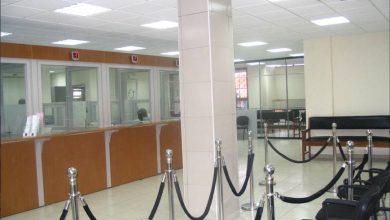Of VAT-exempt internet services and policies
In his 2013/14 National Budget Statement, Malawi’s Minister of Finance Ken Lipenga announced the reintroduction of input value added tax (VAT) on internet services.
In justifying the VAT, currently charged at the rate of 16.5 percent, the honourable minister argued that introduction of the input VAT on internet services would eventually help reduce the costs associated with provision of internet services, thereby making the internet cheaper and more accessible to users.
From a distance, the minister’s argument was based on the fact that the internet service providers (ISPs) would be claiming input VAT from the public tax collector, the Malawi Revenue Authority (MRA).
By definition, VAT is a sales tax which is passed on or paid by the consumer of a good or service. It is also defined as a tax charged on value added on goods and services regardless of their origin i.e. whether imported or locally manufactured. And input VAT is a tax a company pays on the purchase price for goods or services bought from another supplier which is, however, later claimed from the revenue collector, in our case, MRA.
Nearly 43 days after the 2013/14 National Budget came into force on July 1 2013, I am yet to see the benefits the input VAT on internet services has given the consumer in terms of pricing as in reality, the situation on the ground is the opposite of what the Minister of Finance told Parliament. Today, internet tariffs have soared beyond the reach of many Malawians, especially students who need it most for their research in today’s information and communication technology (ICT) age.
Those who access the internet using either mobile phones or dongles provided by Airtel Malawi Limited, Access Communications Limited, Malawi Telecommunications Limited (MTL) and TNM will testify that they now have to dig very deep into their pockets to simply browse the internet or access e-mails, without even the luxury of downloading any material, due to a hike in the tariffs.
Since the minister’s announcement, the internet tariffs have gone up by between 20 percent and 25 percent.
Honourable minister, VAT being a tax on the value added, which makes the difference between cost and turnover, it is a tax paid by or charged on the consumer of a good or service.
Personally, I do not blame the ISPs for raising the rates. They are in business. They have to maximise profits and give their shareholders returns on their investment, hence, naturally, they have to price their services in a way they will make profits.
Put simply, the input VAT the honourable Minister of Finance announced meant that the ISPs could pay VAT on the cost of their supplies/accessories without factoring the same on the sales, but to recover the VAT, producers usually pass it on to the final consumer.
Internet services, as a component of ICT, are no longer a luxury in the modern world. In fact, I was delighted when I noted that government included ICT, including internet services as one of the pillars in the Economic Recovery Plan (ERP).
Several countries have developed because of ICT. We need to follow suit by making the services and their accessories as affordable as possible to achieve increased access to ICT. The internet and ICT services should not be the preserve of the wealthy few who can afford the high costs.
I see a policy mismatch in the way Capital Hill is handling ICT development here. For example, Capital Hill wants to encourage access to the internet while at the same time pushing the cost high beyond the reach of the majority poor Malawians.
Prior to the 2013/14 tax measures, internet services were exempted from tax.
It is my humble plea to Treasury to consider reverting the internet services to the tax/VAT exempt category as this is the best way to make the service more accessible to consumers and at lower cost.
Without making internet services a zero-rated or VAT-exempt supply, surely government is cheating the masses that internet services will be cheaper to the consumer with the introduction of input VAT.



